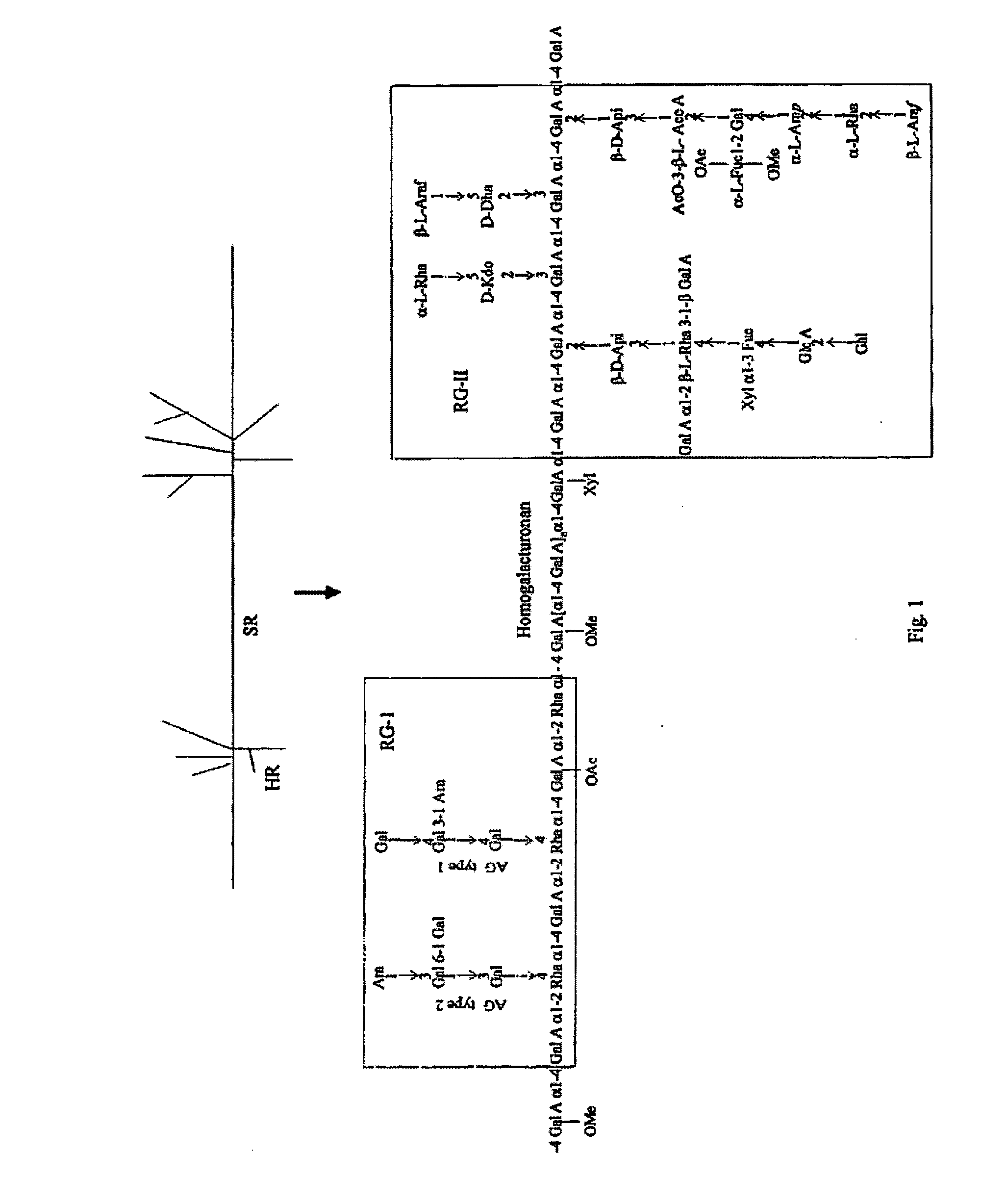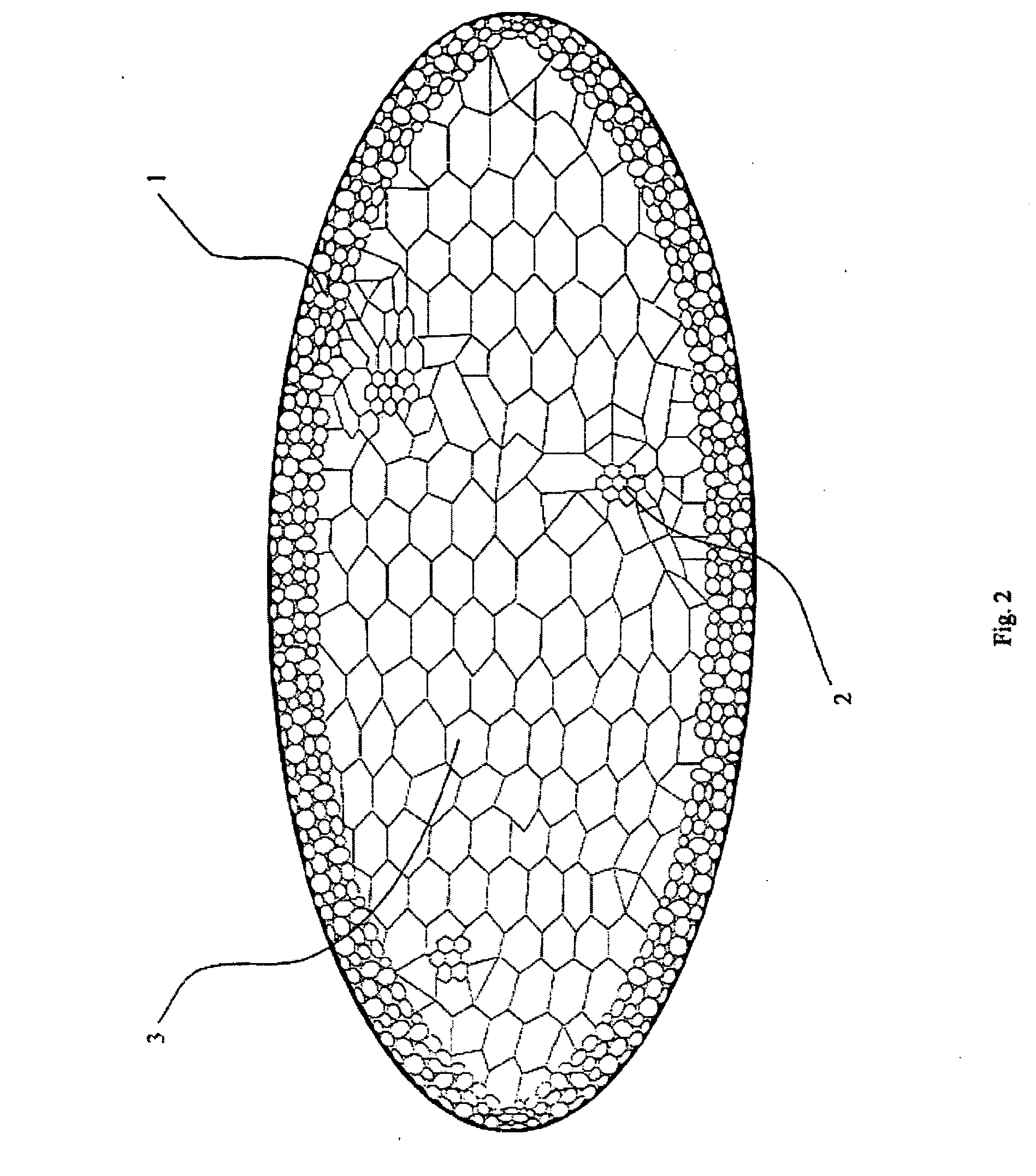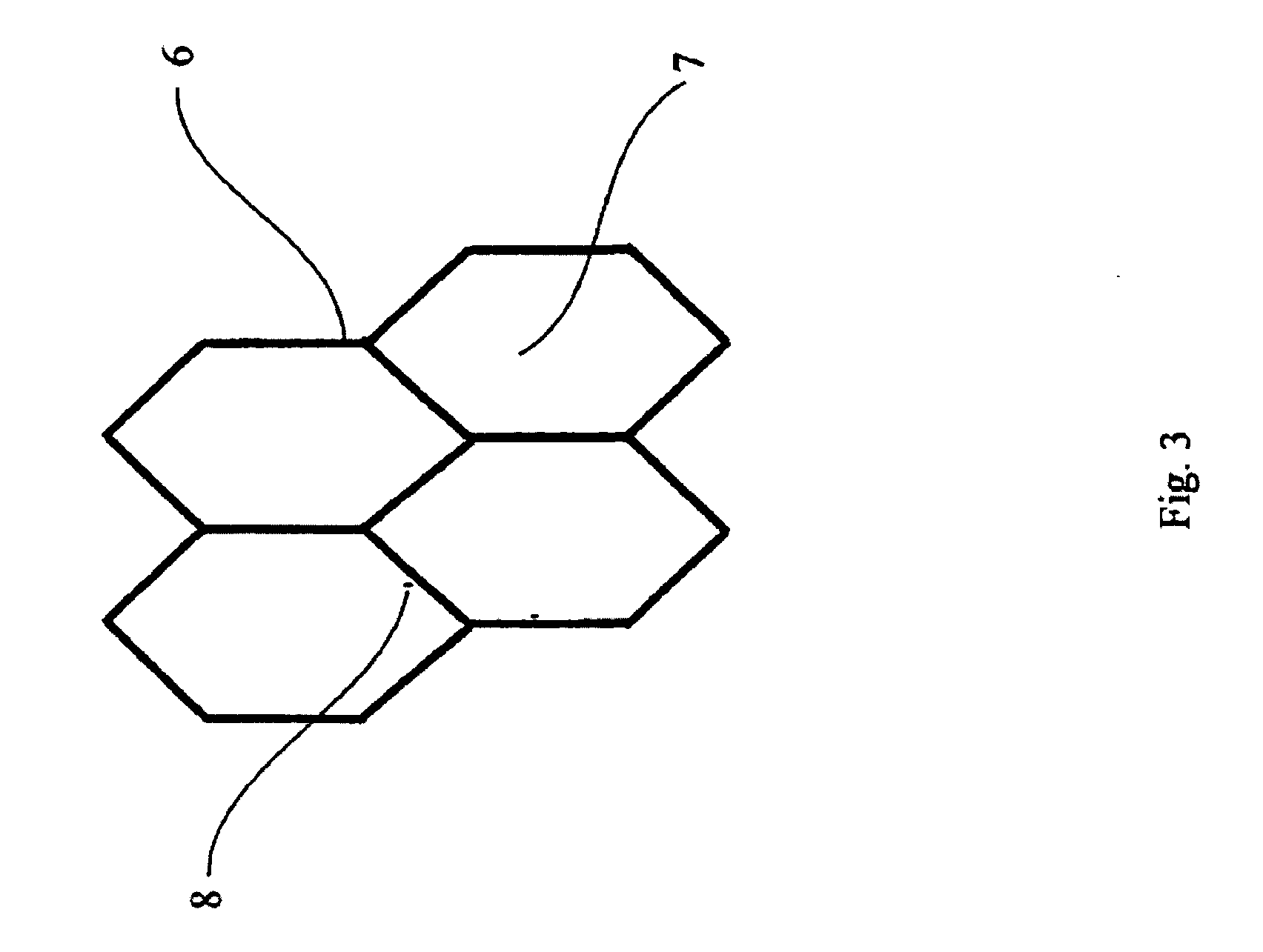Pharmaceutical compositions comprising Aloe pectins, and methods for their production and use
- Summary
- Abstract
- Description
- Claims
- Application Information
AI Technical Summary
Benefits of technology
Problems solved by technology
Method used
Image
Examples
example 1
Light and Electron Microscopy of Leaf Sections
[0068] Fresh Aloe vera leaves were sectioned with a surgical blade into 2-3 mm-thick pieces. The sections were directly observed under the light microscope (Olympus BH-2). For histological analysis, fresh Aloe vera leaves were fixed in 10% formalin in PBS and sections were stained with toluidine blue.
[0069] The protocols for tissue fixing and staining for electron microscopy followed that described by Trachtenberg (Annuals of Botany, 1984, 53, pp. 227-236). Briefly, fresh pulp tissue blocks were fixed at room temperature in 4% glutaraldehyde in 0.2 M cacodylate-HCl buffer (pH 7.2) for 2 hrs followed by fixing for 2 hrs in 2% osmium tetroxide in the same buffer. The tissues were dehydrated and sectioned after embedding in resin. The tissue sections were stained with uranyl acetate, and examined using a Zeiss 10C electron microscope. The light microscopy of leaf sections showed that the pulp (3) consisted of large clear mesophyll cells, ...
example 2
Light Microscopy of Cell Wall Fibers
[0070] BAM was dissolved in water at 2 mg / ml. The solutions were stirred at room temperature for 3 hrs or at 4° C. for overnight. They were then centrifuged at low speed (1000 rpm or 180 g) for 15 min (Beckman TJ-6). The pellet was collected, washed once with water, and dried (Centrivap, Labconco). The weight of pellet was determined following drying. A small sample of the pellet was examined under the light microscope (Olympus BH-2). The insoluble pellet materials from the pulp extracts appeared to be fibers at low magnification (4×), and to be clear transparent sheets at higher magnification (10× and 40×) with an appearance identical to those clear pulp cell walls described above. With less extensive homogenization, some of these fibers still retained the original structural features of the mesophyll cells. These observations together indicate that the insoluble fibers are derived from the pulp mesophyll cell walls.
example 3
Extraction of Aloe Pectins
[0071] Preparation of cell wall fibers. Two types of cell wall fibers were used, alcohol-treated and non-alcohol-treated. The alcohol-treated fibers were isolated from BAM by centrifugation. BAM was dissolved in water at 2 mg / ml. The solution was then centrifuged at 180 g for 10 min. The pellet, consisting of cell wall fibers, was harvested and washed three times with water before being dried. Since BAM has gone through alcohol precipitation, these fibers are therefore similar to those alcohol insoluble residues or solids (AIS) that are commonly prepared for extraction of pectins from other plant tissues.
[0072] The non-alcohol-treated fibers include the crude pulp and rind fibers. Crude pulp fibers were those retained by the coarse filtration during production of BAM and other pulp-based products. They are the same as those found in BAM, except for being larger in size and hot alcohol-treated. They were collected with a no. 18 sieve (1 mm opening) with mi...
PUM
| Property | Measurement | Unit |
|---|---|---|
| Fraction | aaaaa | aaaaa |
| Fraction | aaaaa | aaaaa |
| Mass | aaaaa | aaaaa |
Abstract
Description
Claims
Application Information
 Login to View More
Login to View More - R&D
- Intellectual Property
- Life Sciences
- Materials
- Tech Scout
- Unparalleled Data Quality
- Higher Quality Content
- 60% Fewer Hallucinations
Browse by: Latest US Patents, China's latest patents, Technical Efficacy Thesaurus, Application Domain, Technology Topic, Popular Technical Reports.
© 2025 PatSnap. All rights reserved.Legal|Privacy policy|Modern Slavery Act Transparency Statement|Sitemap|About US| Contact US: help@patsnap.com



